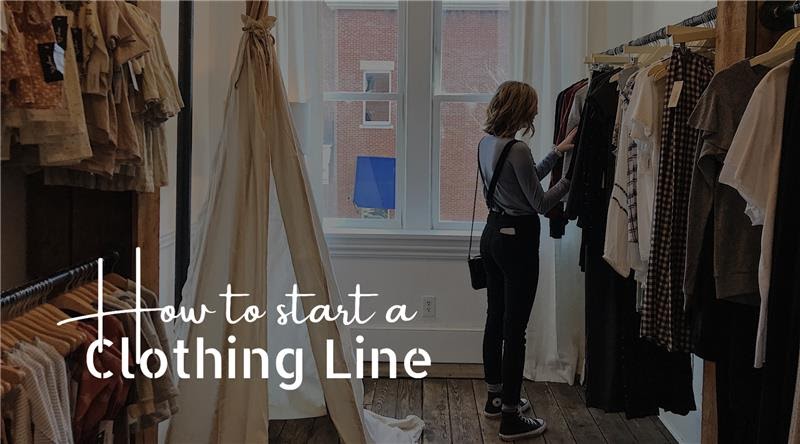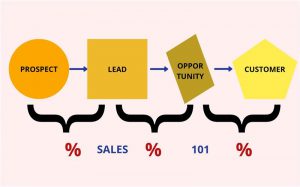Many people want to start a clothing brand or clothing line. But, how difficult could it be?
Let me tell you that clothing brands become successful in part because they’re created by people who are passionate about clothing.
But, a clothing brand needs an exquisite apparel design to form an everlasting business. Also, it needs all the trimmings of a successful business. Apparel retailers need to master manufacturing, marketing, and retailing at the most.
Sarah Donofrio, founder of One Imaginary Girl once said that “It took me a long time to be confident enough that I could fill a store with my clothing”.
So, are you an apparel entrepreneur or a designer? If you’re able to start a business (whether part-time or full-time) and wondering how to start your successful clothing line, let’s get right down to it.
In this article, you will be able to know about the money required for starting a clothing line, how you can design your clothing line , some frequently asked questions, 6 designer apps to start your clothing line, skills required, clothing business name ideas and how you can differentiate your clothing line.
Skills And Training For Starting A Clothing Line
There are a growing number of fast-track and online courses for apparel industry hopefuls.
Consider online courses through sites like Maker’s Row Academy, MasterClass, or Udemy. You can also check your local community universities for formats that accommodate your schedule and budget,
Many institutions offer fashion design and little business programs in varying formats.
Schools like Parsons in NY and Central Saint Martins within the UK are world- renowned for their fashion programs.
It’s possible to skip school and make it in the fashion industry, but formal education, whether in a classroom or online, has its merits.
Learn the most recent industry standards, get access to resources and equipment, make contacts, and obtain feedback.
Designers such as Dapper Dan and Vivienne Westwood found massive success within the fashion world, although they were self-taught and that they started their careers pre-internet.
We live in a time of access, where rebuilding an engine or tailoring a t-shirt is often learned just by watching a YouTube video.
While Sarah Donofrio owes an excellent deal of her success to learning professional skills during a classroom, much of her education was gained within the world.
She left school and worked within the private sector, holding retail buying and product development roles for giant companies like Walmart and Jean Machine.
“Working in corporate, I knew I was hitting a wall,” Sarah says. “I wanted to work for myself. But I felt that it was important to get that corporate experience.”
How to Start Your Clothing Line In 14 Easy Steps?
-
Craft Your Clothing Line Brand Ideas
Your brand is your company’s public identity. Ideally, your brand should embody the best attributes of your company.
Clothing is extremely personal because our clothing choices are one of how we define our identity – to both ourselves and the globe.
Fabrizio Moreira had described in “Building a Startup Clothing Brand during a Fast Fashion Economy“:
“They want a brand “experience,” they want authenticity. It follows, then, that having a message that resonates with these consumers, and staying authentic thereto message, is one of the few ways to interrupt into the cutthroat fashion industry as a small brand”…
So, before you sketch your first design, and get ready to start your clothing line, prepare yourself these important questions:
- Is my biggest challenge is finding out how to start a clothing line or an innovative clothing line to launch and how to design the apparels?
- What identity do I would like my clothing brand or clothing line to project?
- Who will want to wear my clothes? What is my target demographic?
- How steep is the target market for your clothes?
- What can customers get from my clothing line that they can’t get anywhere else?
- What makes my clothing line unique? Is it high-end?
- Is there a pricing factor that hits a sweet spot in my target market?
- What is the foremost important part of my customer’s experience?
Your answers to those questions (and others like them) will build the core of your brand.
All of your future branding decisions should expand on these business ideas.
Your business name, website design, company logo, should all grow from the concepts you laid out here.
So, take your time to think about your brand from the start.
Fashion is an exciting, fast-moving industry. You might have many business ideas for a clothing line, but you need to specialize in one.
-
Choose Your Business Model
Before you’ll consider the main points of your first designs, you’ve to decide on what kind of clothing line you’re planning to offer firstly.
There are many different models for fashion businesses. Here are a few of the most popular:
Print-on-Demand
This business model is based on a third-party to print and ship pre-existing wholesale garments to your customers.
Your custom patterns or prints are applied to a suitable garment then shipped out to your customers because the orders come in. So, there’s no need for you to manage fulfillment or store inventory.
It’s one of the easiest business models to adopt; but, it also results in some of the lowest revenue as much of your profit goes to the third-party that is fulfilling your orders.
These model works are suitable for t-shirts, especially if you are not willing to produce large batches of pre-printed t-shirts for the first line.
Pros for the print-on-demand business model
- Typically, no set-up costs or low set-up costs
- High-quality prints.
- Unlimited color options but price increases with the number of colors
- Ideal for small order quantities or one-off prints
- Many different clothing options (t-shirts, shirts, hats, leggings, jackets, socks, dresses, etc.)
Cons for the print-on-demand business model
- Not cost-effective for large quantities
- Few vendors offer volume discounts
- Very limited print product selection (you’re limited to what the seller offers)
- Sparse finishing options (tags, labels, packaging, etc.)
Custom Wholesale
Custom wholesale business models are based on the premade purchase of wholesale garments and then customizing the clothing by hand.
You can print, applique, embroider, or otherwise embellish the present garments to suit your vision.
This model requires some time and financial investment. You’ll need to purchase the garments and then pay for the materials and labor to customize them.
You’ll also have to store inventory and fulfill your orders.
However, you’ll bring home more of your profits than the print-on-demand model since there’s no third-party to pay.
Pros for the custom wholesale business model
- Very cost-effective in large production runs
- Most vendors offer substantial volume discounts
- Lower costs mean bigger margins for you
Cons for the custom wholesale business model
- Not cost-effective for big clothing lines with distinct colors, items, and sizes
- Limited to simple designs and images like, you can’t print photographs.
- Minimum orders require 10 to 25 units per color or size
- You’ll need to find out the way to manage inventory and shipping – the seller won’t do that for you.
Cut And Sew/Private Label Ecommerce
This is the business model most people think about once they decide to start their clothing line.
First, you will design your clothing line and have it manufactured according to your specifications. This is done by a manufacturing partner and will help you to sell it under your private label.
A private label model would require you to buy the fabrics, décor, and notions needed to make your garments.
You have to store your inventory and fulfill your orders.
Pros for the cut-and-sew and private label business models
- 100% custom clothing – you design it yourself.
- Increased perceived value from customers for unique clothing.
- Bigger margins since you’ll have less competition after you sell unique clothing items.
Cons for the cut-and-sew and private label business models
- High startup costs.
- Many moving parts and you’ll need to watch out for everything by yourself or using your team.
- Takes many months to prepare and launch.
Custom Couture
Custom couture is also the riskiest fashion industry model.
Couture garments are hand-made to suit each client. This level of detail is labor or time-intensive and expensive to execute.
This means that every piece will escort a high tag – the type of tag that’s only really accessible to the rich. This limits your potential customer pool.
However, if your designs catch the attention of rich clientele, your business could sky-rocket.
Pros for the custom couture business model
- 100% custom product.
- Huge perceived value from wealthy customers.
- Biggest margins.
Cons for the custom couture business model
- Much smaller target market.
- Requires you to have a strong brand.
- Can take years to achieve credibility as a couture brand.
-
Choose Your Niche
Once you know whether you’ll be creating a cut-and-sew collection or a print-on-demand business you can get more specific.
What kind of clothes will you make?
Is your clothing line a sportswear brand? Or will you be offering retro-inspired lingerie? Will you design for men? Women? Both?
You must create and refine your business idea by identifying your clothing line’s niche. This is done before designing your first collection.
You’re more likely to succeed if you design particular products for particular people. So, decide ahead of time who your core audience is and what products are going to be the center of your clothing line.
- Women’s Dress Clothes
- Men’s Dress Clothes
- Women’s Casualwear
- Men’s Casualwear
- Swimwear
- Sleepwear
- Lingerie
And even within those niches, you’ll pick a range of clothing and apparel products, including:
- Short sleeve shirts
- Long sleeve shirts
- pants
- leggings
- hoodies
- dresses
- lingerie
- underwear
- socks
- ties
- belts
Make sure you’re zealous about the niche you choose.
-
Create Your Fashion Business Plan

Another important step in figuring out how to start a clothing line is to choose the business structure for your new apparel business.
Sole proprietorship or LLC? Incorporate or register a partnership?
When starting a new clothing line, you should hire an experienced business attorney.
After you determine your business’s legal interface, you’ll need to file the necessary paperwork.
You can check all of the info you need to find out what sort of license or permit you’ll need to start a business in your state in the U.S. Small Business Administration.
Once you are over with the legal structure, create a clothing line business plan.
Bianca Dabney Founder of BIDA advocates “However, I’ve had to make changes and adjustments based on my customers and the environment. Running a business is an ongoing evolution. It’s imminent to have a clear plan of action, but it’s also important to be flexible and be able to adapt.”
Your business plan should include a statement about your clothing brand, a general description of your products, and a strategy for how you plan to sell them.
Remember, as you prepare your business plan, ensure that it’s flexible because market and customer behaviors change.
-
Access Your Startup Cost
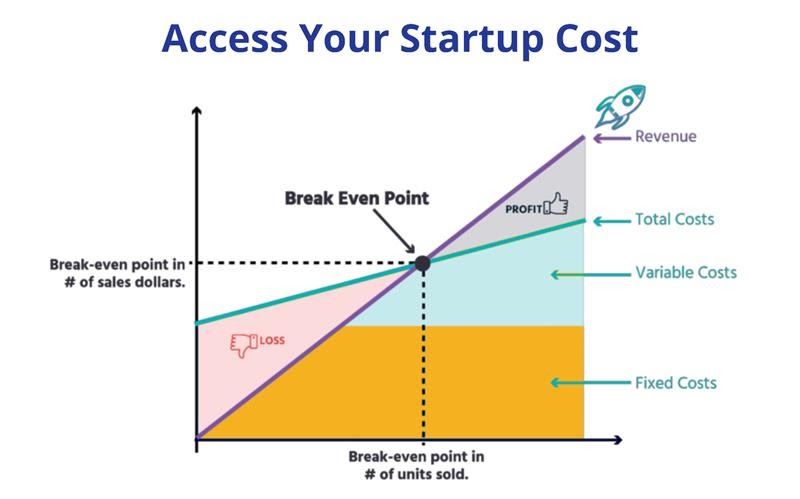
When you start your clothing line, costs will be included in:
- your fashion brand designing that is logo, business cards, and website.
- any license or permit fees.
- deposits and rent for a physical work location if you propose to lease your workspace.
- Infrastructural costs like internet and phone service, invoicing software, etc.
- marketing and advertising costs.
- Design or sewing tools such as sewing machines, scissors, rulers, pattern maker, fabric printing accessories, and t-shirt templates.
- materials for your clothing line collection like fabrics, notions, and embellishment decor.
- hourly wages to cover your construction and design time.
If you plan to hire employees, you’ll have to budget their wages into your start-up calculations as well.
Once you recognize what quantity it’ll cost to induce you to start along with your fashion brand, compare that with the funds you have.
Then plan how you’ll make up any difference.
If you’re choosing a Cut-and-Sew line, you’ll have to calculate how many yards of fabric are needed to make your garments.
If you’re going to work with pre-made wholesale garments, you’ll want to buy for the most effective prices at your quality point so you’ll hit your target price point.
-
Price Your Products
To create a wise and effective pricing strategy, you’ve got to begin by knowing what proportion it costs you to produce your clothing items.
It’s also important to bake the cost of running your business into your clothing prices as well. Otherwise, it’ll be difficult to sustain your business over time.
It is recommended that you aim for prices 30% – 50% higher than your expenses to ensure a profit.
Look At Competitors Stores
Remember, your potential customers are shopping for more than just your clothes. They’re shopping with your competitors, too.
And, they are aware of how much clothing items cost. Consciously or not, they’re gathering data about what they think a product like yours should cost.
That means you would like to know your target market, your sales channels, and what your competitors are charging, too.
Focus on Perceived Value
Perceived value is the amount that a customer thinks a product is valuable for. And, your competitor’s prices are a section of that perception.
For example, a low price shirt that looks fancy may have a higher perceived value as compared to a beautifully made simple shirt.
Most customers don’t have any idea what proportion of time, money, or effort goes into making a specific garment.
A classy logo and high-end brand positioning will result in a better-perceived value than discount brand positioning.
You can go through 99designs which will assist you together with your graphical profile and logo.
Here you’ll get the proper logo design – or any design in over 90 categories! Whatever your business needs or budget, we’ll help catch on done.
Margins
To set prices/margins, calculate what proportion it costs you to induce your product.
That includes how much your manufacturers or suppliers charge per item.
This will also include the price to ship each item from the factory to Amazon or other partner networks.
-
Build Your Web Presence

Today, it’s impossible to reach most customers without a website.
This is very true for brand new small businesses and startups trying to compete in an increasingly noisy world. but it’s also true for even established companies.
Don’t believe me? A recent study shows that 97% of consumers research their purchases online before they buy something.
Your website could be a crucial component of your marketing and branding strategy.
So, Build your website by following these steps:
- Buy your Domain Name from GoDaddy.
- Choose a hosting company from LiquidWeb or Bluehost or HostGator.
- Go through a platform like Fiver or 99Designs to see if that works for your logo.
- Squarespace could be a good option for creating a landing page.
Listen, your website needs to look good. Consider sharing a web lookbook featuring your fashions, also as traditional product shots.
Through this, your audience can provide inspiration, see the styles in action, and relate themselves with your designs.
Once you’ve launched your clothing line, you may plan to diversify your sales channels by actually selling your clothing through your social media channels, or perhaps joining a marketplace like Amazon, eBay, or Etsy.
-
Design Your First Collection

Once you’ve selected the correct business model, business plan, and niche for your clothing line, it’s time to begin brooding about the clothes themselves.
We can’t tell you what your designs should be as that’s the magic you’ll need to craft yourself. But, always be true to yourself as a designer. And, don’t be afraid to be unique.
Authenticity and uniqueness are the elements that will differentiate your clothing line within the crowded fashion marketplace.
-
Reach Out To Manufacturers
A clothing manufacturer isn’t just the means to an end – it’s the business vendor that will assist you to make your ideas a physical reality.
It might happen that your existing clothing manufacturer might not be a good fit for the new line.
This often happens, for example, if you started with t-shirts and are now looking to start producing a more tailored cut-and-sew line.
You should decide to interview a variety of various clothing manufacturers to search out the one that’s the proper suited for your business.
Remember that you must make sure that you maintain healthy profit margins for your business, and manufacturing production costs are going to be an oversized percentage of your budget.
Also, let me tell you that every manufacturer can produce every clothing item in your clothing line.
You may have to find different manufacturers including every clothing item in your new line.
Anna Livermore, founder of apparel industry consulting firm V. Mora, recommends completing the subsequent “To-Do” list before reaching out to manufacturers.
- Determine a realistic, honest budget. Don’t overcommit funds you don’t have.
- Learn about the manufacturing timeline so you’ll be able to plan accordingly.
- Prepare your design resources such as fabric swatches, sewn samples, and tech pack or renderings.
After you complete that to-do list, look for a clothing manufacturer that incorporates a designer on staff.
That could give you a competitive advantage because an experienced fashion designer can anticipate problems you might not notice when you share a blueprint for your designs.
Before you plan a full-scale run, order a couple of samples from several manufacturers to gauge the standard, adherence to the manufacturing process they claim to possess, and speed of their work.
For example, if you’re screen printing on your clothing, examine the standard of the print. Examine the labels to make sure they contain the data you need.
-
Create a Sales Strategy

Where do you commit to selling your clothing line? In an online shop or an online store? or in a brick and mortar store of your own?
Or maybe you would like to sell in local boutiques that feature many alternative clothing items?
Your sales channels will affect many future decisions, so pick wisely.
Your sales plan should be comprehensive. You’ll want to develop both an overall marketing/sales strategy and also a listing of day-to-day tactics that will assist you to sell your clothing line.
Online Store
Selling a clothing line in a web store is cheaper and less labor-intensive than putting in your physical store. When you operate a web store, there’s no monthly rent, mortgage, or property taxes to pay, and no fixtures to shop for.
Most template-based web design services offer some sort of e-commerce platform functionality which will allow you to launch a web store quickly.
And some, just like the Shopify eCommerce platform, are built specifically for e-commerce.
These platforms will, among other features, let customers pay by their card (you won’t have to get a special merchant account because the platform will already provide this functionality).
But, think twice before you choose to use a template-based service like Shopify.
There are open-source e-commerce services available that allow you to use your own branded website with their e-commerce functionality.
Check out services like WooCommerce, Magento, and OpenCart. Not only you can use your original web design, but they also scale easily alongside your business because it grows.
Offline Store
Alternatively, if you dream of selling inside a physical store, it’s a safer financial bet to the beginning by selling in boutiques that exist already before taking the plunge and opening your shop.
This permits you to, among other advantages, accept card payments without having to first establish a merchant account, and delays the requirement for you to search out and purchase physical space.
However, if you make wise location choices, there’s a fair chance that your audience already shops for garments there.
Start thinking like a retailer after you’ve decided on which boutiques you’d like to partner with.
Stitch Method’s Philbrook shared this recommendation in her article 5 Things I Wish Someone Had Told Me Before I Started My Clothing Line:
“If you plan on selling wholesale to boutiques it is important that you have merchandise ready to sell during the correct buying season… You need to figure out when you need to have production ready to ship to stores or customers and then work backwards from there through the development stages (leave enough time!) to make sure that you are working on the correct season.”
-
Finding Potential Customers
A great way to start is to compile a listing of local fashion editors and media outlets (radio, television, and online blogs).
When you can launch your clothing brand or your clothing line, you’ll notice these resources via press release.
Take it one step further by creating a complete press kit. Check out this text from PR Couture to learn how.
Another important marketing tool for your clothing line is the pictures of your garments. Hire a professional photographer to ensure great results.
Also, You need to build an online presence.
Maintaining (at a minimum) a Twitter and Facebook presence will assist you to build an audience of devotees. And consider micro-influencers, who can assist you within the early days.
A major reason why customers buy from a start-up business instead of a major retailer is that they feel a connection to that business’s story. So, use your Twitter and Facebook to share that story for free.
Last but not least make customer profiling in 3 segments-
Demographical:
- Gender
- Age
- Marital Status
- Education
- Job
- Income
- Religion
- Country
- Living environment
Psychological:
- Lifestyle
- Interests
- Values
- Style
- Vacation and free time
- Shopping behavior and motive
- Online or offline shopping preferences
- Goals and aspirations
Beneficial info:
- What social networks do they prefer?
- Where do they consume their news?
- What challenges do they face?
- What are their pain points?
- How do they plan to spend their money?
- What would make your customers recommend your brand?
-
Launching Event
Finally, consider throwing a launch party to make exposure and excitement for your line.
Build your list
Remember those local fashion editors and media outlets? They should be on your list. Also include local boutique owners, fashion buyers, and anyone else who is relevant in your field.
Don’t compete for guests
Schedule your party with no other major events related to the fashion industry. You don’t want to force your attendees to settle on between your launch and another event.
Hold your event at an interesting location
A special and unique venue can make any event feel like an event. But, don’t choose randomly, pick a location that jives together with your brand presence.
Try to find a venue where your audience would feel right at home – if ‘home’ was super fun and exciting.
Offer something for free
People love free swag. If you can afford it, offering a relevant gift will make a great impression on your guests.
A branded t-shirt might be the right gift. Or you can give a one-off specially designed garment during a raffle. If your budget is tighter, offer an open bar for a limited part of the evening.
Everyone loves an open bar; and, you can schedule the timing to coincide with when you’d just like the bulk of your guests to arrive.
-
Finding Investors or Partners
Partner and investor relationships can come in a large number of forms. Are you just trying to find someone to invest capital?
Or are you trying to find leads, someone to separate costs with, or exposure and success-by-association with a longtime brand?
But, you must know what your goals are before meeting with any potential partner or investor.
Once you’ve determined what your relationship goals are, it’s time to begin considering the sort of relationship that may best meet those goals.
Earlier, angel investors and venture capitalists were the standards. But, then crowdfunding changed the fundraising landscape.
You can also take a look at our Venture Capital Pre Screening Assessments to evaluate your business and start a clothing line.
-
Hire Employees
So, at first, you must only hire for positions that will provide the foremost immediate benefit to your business.
But when considering what positions to rent for, consider what aspects of the business are posing the best challenges. And, consider your limitations.
Hire an employee who is an expert in those areas within which your business is currently lacking.
You might want your first employee to be a part-time assistant. Search for someone who is a jack-of-all-trades, with a strong work ethic.
Hiring employees for your apparel business means you’ll need to ensure all kinds of legalities and paperwork.
The hiring experts at Indeed recommend that you:
- Get an Employer number (EIN) by applying on the IRS website (you’ll get your number immediately after applying!).
- Register with your state’s labor department.
- Fill out paperwork for federal taxes from your employee’s wages.
- Set up workers’ compensation insurance if it’s required in your state.
Note- This process you can opt on how to start a clothing business online as well.
Free fashion designer Apps For Your Clothing Line
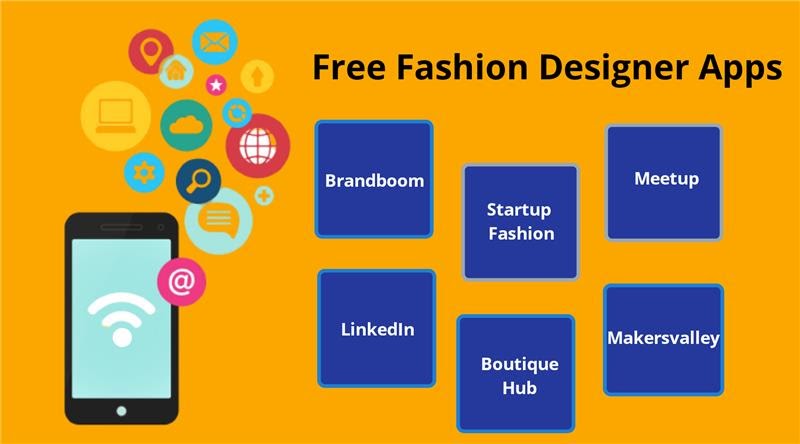
Meetup
It is available on the iOS App Store. One of the primary steps is to do your research on your idea and obtain feedback thereon from customers who may pay you and help turn your idea into a real business.
One of the simplest ways to induce free feedback is to prepare a meetup in your hometown where potential customers can study your brand and be inspired by it.
If you don’t know how to arrange a meetup, you can find all the steps to make it happen with this free Meetup Organizer Guide.
MakersValley
Desktop and mobile site available now. Coming soon on the iOS App Store.
MakersValley can assist you to start even without a pattern employing a white label factory design. This service can even assist you to create a novel pattern employing a garment prototype or complete design rendering.
Once you’ve created your online tech pack using either your design rendering or a white label factory design, you’ll use the MakersValley 30-day free trial to begin getting bids from many Italian manufacturers who can create your design in Italy.
The best part is the bids that you receive are mark-up free. MakersValley has quality assurance of these factories and their work. This is to recognize that their work is going to be worth your investment.
StartUP FASHION
Do the words “business plan” make you shudder? Yeah, us too. Don’t worry, creating a business plan doesn’t need to be difficult. StartUP Fashion makes it easy for you.
They offer a free one-page fashion industry business plan template, and if spending a couple of dollars isn’t too out of the question, they also offer some great online fashion designing courses for up to $25.
This app also provides a listing that updates you on great tools for fashion designers with some emails and even accompanies occasional freebies. It’s a total win-win.
Brandboom
Available on the iOS App Store.
Once you’ve got started your clothing line, you’ll need the tools to sell your products.
One of these could be a catalog, also known as line sheets, which you utilize to show off your products to potential customers so they’ll see what you’ve got to offer.
Brandboom allows you to create free and unlimited clothing line sheets. This will give your new fashion brand the professional image it needs.
Plus, you’ll even be able to receive up to 10 free buyer notifications from fashion buyers fascinated by purchasing the products on your Brandboom line sheets.
Boutique Hub
If your dream is to open a physical storefront or if you’re already a brick and mortar boutique owner, re-evaluate to Boutique Hub’s blog at no cost tips about how to start promoting your business for free of charge on social media and find customers in your door.
This search tool allows you to search Instagram, Facebook, anything you want to get free tips. This app also provides bonus points for online fashion courses and live Facebook feeds at trade shows.
LinkedIn is free to join and is a tool utilized by a lot of fashion entrepreneurs such as you to connect with people you don’t know and grow your network in a very professional online environment.
You can create your free LinkedIn account, look for “fashion buyers” within the search bar, and click on “Groups”.
To start moving into touch with these buyers directly, you can sign in for LinkedIn’s free 30-day Business account (you can cancel anytime).
The Business account comes with 15 InMail messages, and therefore the ability to message buyers directly and pitch them information about your clothing line.
Differentiating Your Clothing Line
To effectively compete, you should have a degree of differentiation that sets you apart within the market from all the remainder.
Design
If you intend to possess graphics or images on your clothing pieces, the designs (the kind of designs and quality of designs) can help set you aside from others.
For Instance: Blackmilk Clothing became a popular Shopify’s largest merchants by creating uniquely designed leggings, while also partnering with major brands,
Fit and Style
If you propose to make your clothing from the bottom up, the particular fit and elegance of the garments are often a crucial point of differentiation.
For Instance: Sharp Casualwear provides clothing to men around 5’8” and those who are looking for stylish staples that fit well.
Perhaps the first online brand that became famous and known for a far better fit is Bonobos.
Bonobos decided that they wanted to make far better-fitting men’s pants. Their better fit helped establish them early and turned their brand into a 100 million dollar company.
Brand
With all else being the same, people will buy from the brand whose story they can relate to.
Furthermore, a powerful brand alone that connects with consumers can allow you to demand a better price point, although the quality is comparatively equivalent to other common and less expensive brands.
Example: Billionaire Boys Club during the beginning of the 2000s sold t-shirts for nearly $100 that simply said “Billionaire Boys Club”.
Although arguably theirs were an equivalent quality as many others on the market, consumers bought into the young, urban brand and its story.
Niche
The niche you select to work in and your target market, if defined properly and if it’s under-served, can be in itself a degree of differentiation.
Example: See Ya Never targets digital nomads that work via the web and travel the globe.
Even with thousands of clothing brands on the market, there’s only a few, if any targeting this particular group of individuals.
80’s Tees sells exclusive designs from 80’s movies and television shows. Not only are the designs appealing and nostalgic, but many of the designs are licensed making them exclusive and nearly impossible to search out elsewhere.
Finally, Canada Threads stressed clothing and accessories that collaborate with Canadians with designs relating to the beloved Canadian House Hippo.
Performance/Material/Quality
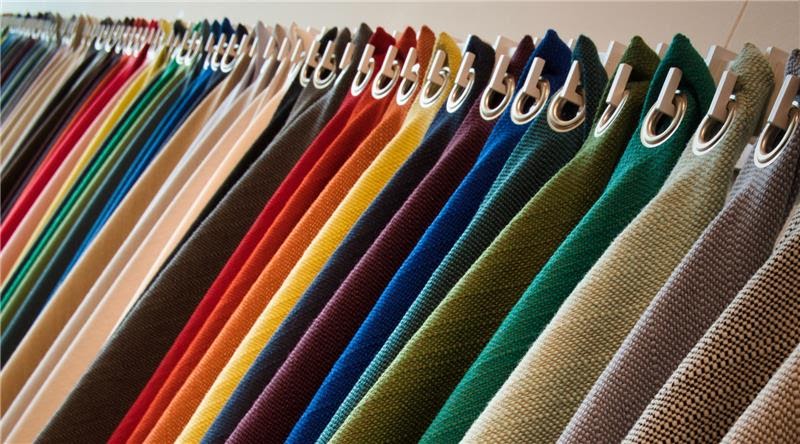
The type of fabric plays a part in differentiating your clothing pieces from the remainder out there, how they perform for the wearer (are they comfortable, itchy, restricting, warm, light, airy, do they wrinkly easily, etc.).
Their overall quality includes seams, buttons, the weight of the material, etc, This will play an important role in your consumer’s satisfaction.
For Instance: Unbound Merino ran a successful crowdfunding campaign raising $300,000 and are creating their brand improving the performance of their clothing:
Casual wear is designed from 100% super soft merino wool which has superior breathability and odor-blocking abilities, allowing this line of travel clothes to be worn again and again without washing.
Clothing Business Name Ideas
If you’re starting a clothing company, you may be looking for clothing name ideas. You can scroll through wothstart that will provide you with more than 400 clothing company name ideas.
There is enormous competition within the clothing business which could be a quite hard task to beat.
But fighting the competition is what winners do. how to make your clothing brand successful in such a large competition?
If you truly want to dig deeper into naming your business properly, examine these catchy business name ideas.
The first step is to make a decision on attractive and unique names for a clothing brand.
Urban Clothing Line Name Ideas
Following are the foremost attractive ideas for urban clothing line name:
- Mouse Creek Trading Co.
- Thistle & Clover
- Bailey 44
- Chris & Carol
- Coco + Carmen
- Valley Green
- A’reve
- L’atiste
- Urban Touch
- Glyder
- Legacy
- Qupid
- Fahrenheit
Street Clothing Name Ideas
Following are the best street clothing name ideas you’ll ever find:
- Buckaroo
- The Juicebox
- Lil’ Boss
- Tadpoles Children’s Apparel
- Shortie’s
- Cowboys
- Freckles
- Playdate
- Willow Wood
- Periwinkles
- Sugarplum
- Doodles
Frequently Asked Question
How much does it cost to start a clothing line?
Startup costs can vary greatly across different clothing lines, but normally, a small-sized clothing line will need a minimum of $500 to start.
A medium-sized line for startup costs should be between $1,000 to $5,000, and a big line will need around $25,000 to $50,000 upfront.
Before you begin planning your clothing line, you’ll want to estimate and anticipate startup costs like:
- Manufacturing costs
- Product sourcing and material costs
- Designing and delivery costs
- Website and marketing costs
- Distribution costs
How much do clothing lines make a year?
The national average earnings for clothing line owners are approximately $51,000 per annum.
Clothing line profits can average between $23,751 and $140,935, supporting your location, line specifics, expenses, marketing efforts, and company size.
Do you need to trademark a clothing line?
Although you don’t need to legally trademark your clothing line, it’s highly recommended.
Trademarking your brand will protect your creative work and products.
How will you source material for a clothing line?
You can prefer to source your clothing line materials online via eCommerce fabric suppliers or in-person from a brick-and-mortar retailer.
While online stores might offer more cost-effective prices or bulk discounts, visiting a store in-person will allow you to examine, feel, and fully experience the material before you commit.
What are the equipment needed to start a clothing line?
The equipment you need to open a clothing line should enhance your store’s decorating theme. While the items needed for several retail stores are similar, the designs vary depending on the concept of the shop.
If you’re short on creative ideas for your store, head over to a pinboard website and look for the theme you’ve got in mind. for instance, you may look for vintage, traditional, trendy, or modern.
You can also use the subsequent types of equipment:
- Effective Use of Signage
- Shelves and Racks
- Display Cases
- Hangers
- Mirrors are Essential
- Mannequins to show Clothing
- Sales Materials and Tags
- Point-of-Sale System (POS)
- Adequate Cleaning Supplies
How can you sell to your customers if you don’t know them?
The goal is to know exactly who your customer is, what they’re doing, where they live, how they shop etc..
The better you recognize your customers, the more effectively you’ll be able to reach them and provide them what they need.
This information will assist you in your range planning, within the product design and development phase, and in your marketing and sales pitches.
The thing is, with the right customer profile you won’t need to pitch aggressively, you’ll know exactly what your customers want desire from you.
Who do you need on your team?
Many roles require to be filled in your business. Let’s undergo it-
- Market Researcher
- Designer
- Production Manager
- Buyer
- Pattern Maker
- Quality Controller
- Sample Maker
- Sales Manager
- Marketing Manager
- Stylist
- Financial Controller
- CEO
- Tech Manager
- Bookkeeper
- Office Manager
- Graphic Designer
- Photographer
Where do I find Designers?
Mintees.com is a good spot to look at the work of other designers and find one that matches what you’re trying to find.
You also might want to try and find designers on sites like threadless.com and designbyhumans.com.
What Is The First Step If I Have $1000?
Buy samples of blank shirts. Ask many folks which blank they solely like the most. Make some designs and ask a bunch of individuals which ones they just like the most. Your opinion should also count.
Get samples made. Do your research and ask inquiries to everyone. Don’t hear the people that tell you to quit what you’re doing.
You are going to surround yourself with a decent team, as well, that shares your dream.
Wrapping Up
Now that you’re armed with the insider info you wish to start your clothing line with no money, it’s time to convert your resolution into reality.
It may seem overwhelming initially if this can be all new to you, however, just specialize in one step at a time and grow from there.
Whatever clothing line you want to create whether it’s your line of t-shirts or an entire collection of cut & sew garments, the information, tools, resources, and experiences provided in this guide should assist you to reach where you wish to travel.


